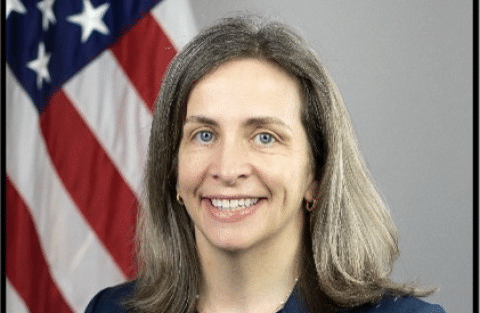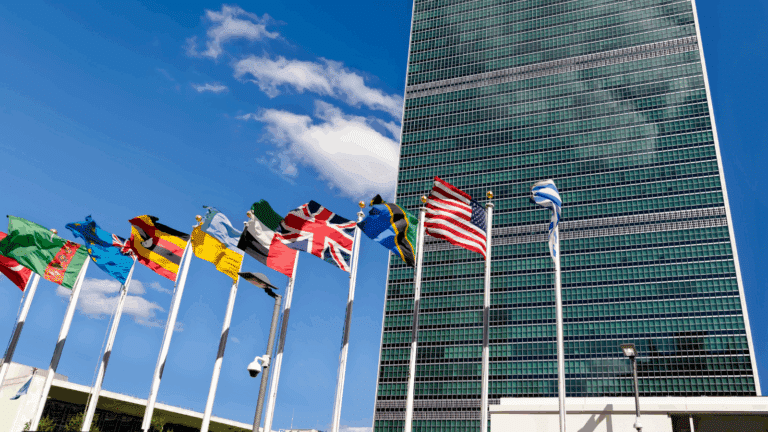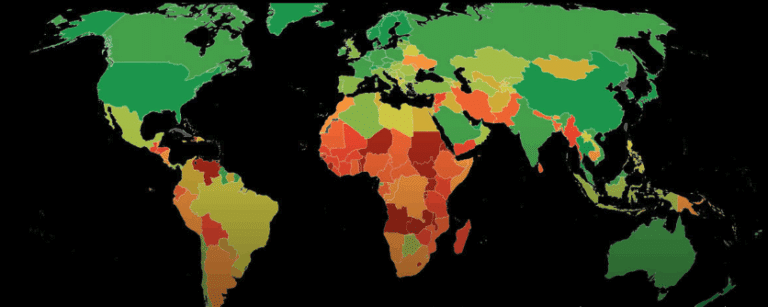This roundtable report reflects the authors’ understanding of key points made in the course of the discussion. It does not necessarily represent the views of the Center on Global Energy Policy. The summary may be subject to further revision.
Contributions to SIPA for the benefit of CGEP are general use gifts, which gives the Center discretion in how it allocates these funds. More information is available on our Partners page. Rare cases of sponsored projects are clearly indicated.
On September 14, 2021, Sustainable Energy for All (SEforALL) and Columbia University’s Center on Global Energy Policy (CGEP) co-hosted a high-level virtual roundtable on energy for development and climate objectives, the first of a series of discussions focusing on the intersection between these two policy priorities. Among the roundtable participants were senior leaders representing major international organizations, development finance institutions, civil society, philanthropic foundations, academia, youth activists, and energy and finance industries.
Convened a week before the United Nations (UN) High-Level Dialogue on Energy—the first in 40 years—the virtual roundtable occurred at a time when the focus of many decision makers around the globe was on accelerating climate change mitigation to fulfill the goals of the Paris Agreement. Amid this sense of urgency to accelerate decarbonization, the roundtable served as a timely reminder of energy’s role in alleviating poverty and promoting growth. With 2.6 billion people (more than a third of the world’s population) lacking access to clean cooking and almost 760 million people (roughly 10 percent of the world’s population) lacking access to electricity, bridging the energy gap by 2030 should remain at the top of the global agenda.[1] Energy access is essential for economic development, especially for the 9.1–9.4 percent of the world that still lives in extreme poverty (defined as living on less than $1.90 per day).[2] Moreover, the role of energy extends beyond basic access: it is critical to generating broad-based economic growth to lift people out of poverty and enable quality healthcare, education, gender equity, food security, and other benefits enjoyed by middle-class populations worldwide.
Roundtable participants discussed options to promote energy for development and climate change mitigation, considering matters of policy, finance, and technology. This report summarizes the roundtable discussion and presents participants’ key questions. The discussion occurred on a not-for-attribution basis under the Chatham House rule.
Tensions or Synergies between Development and Climate Change Goals
Although there have been many development successes over the past two decades, with many raised out of extreme poverty, too many people around the globe continue to struggle for basic economic opportunity. In part, this persistence of poverty highlights the need for greater energy development as a prerequisite for broader economic growth. The drive for accelerated climate progress introduces additional challenges to these global development efforts. Given current national climate pledges (NDCs, or nationally determined contributions), the world has a “climate budget” of roughly 7 to 8 years before the atmospheric concentrations of greenhouse gases will exceed those thought to be consistent with 1.5 degrees Celsius of warming.[3] Noting this reality, participants agreed that increasing ambition of climate action is needed. But as many participants noted, some forms of action, such as restrictions on the ability of development finance institutions to fund even certain lower-carbon fossil fuel projects, could be seen as placing an unfair burden on countries that have contributed the least to anthropogenic climate change but are the most vulnerable to its impacts.
All countries undoubtedly face the challenge of decarbonizing while driving economic growth. However, discussants noted, this challenge is many times more difficult in developing economies because it is often compounded by the lack of capital, infrastructure, capacity, and other resources.
Throughout the roundtable, discussion focused on how to understand and manage the tension between energy development and climate change goals, with participants expressing different levels of optimism and pessimism about the prospects for synergies between these two efforts. Several commentators expressed the view that recent cost reductions for zero-carbon energy technology could allow both development and climate objectives to be achieved simultaneously. One speaker highlighted the opportunities afforded by dramatic reduction in renewable energy costs over the past three decades: in the past, some forms of renewable energy were so costly that they made little economic sense. Some discussants noted an area for further cost reductions involves “soft costs”—namely those associated with project preparation, as well as legal and financial structures.
Others presented a different perspective, arguing that there is a clear tension in many parts of the developing world between development and climate objectives. These speakers maintained that ensuring energy affordability and alleviating poverty should be the top priority in poorer countries, such as India. While many observers focus on the falling costs of renewable energy, roundtable discussants noted that the reality in many poor countries is that the electric grid still fails to reach the poorest communities. In addition, in some areas where grid power is available, it is economically out of reach for many potential consumers. One speaker highlighted that in Kenya, where there is a high share of renewable power and even government-supported last-mile programs that bring the grid to rural centers, electricity costs still remain prohibitive.
Participants noted that various development finance institutions are also trying to find the right balance between development and climate objectives. While portfolios of many of these agencies will become carbon constrained, not all fossil fuel projects that have high development impacts will be ruled out. For example, funding is being provided for natural gas projects in areas of the world where continued use of natural gas can be justified because it significantly improves electricity access and/or helps switch away from a more polluting source of fuel, such as heavy fuel oil.
Several participants called for wealthy countries in the “Global North” to undertake deeper emissions cuts to allow developing nations, mainly in Africa, to increase their carbon emissions and pursue fossil fuel-powered economic growth. Some called for the idea of a “just transition” to be made central to discussions leading up to COP26 in Glasgow. They noted that the Energy Transition Council is an illustration of a body that is seeking both to integrate all climate and development goals in a holistic way and to provide country-specific assistance.
The Role of Natural Gas in the Energy Transition
Participants in the roundtable expressed the view that coal-fired power generation has no long-term future; the discussion of coal centered on the need for decommissioning coal power plants and transitioning away from coal use.
The role of natural gas, by contrast, sparked debate. Many participants supported natural gas as crucial to the energy transition and highlighted its benefits as a scalable, abundant resource to help address energy poverty; as a fast-ramping resource to help stabilize and maintain a reliable electricity grid system; and as a cleaner cooking fuel (compared to diesel, coal or biomass). Several speakers described natural gas as crucial to the transition and expressed strong opposition to any bans on natural gas, especially for cooking gas. These speakers emphasized the need for decision makers in developing countries to plan for an energy transition that considers the eventual pathway away from natural gas and manages the risk of premature closures of natural gas infrastructure.
But there were also concerns expressed about methane and the need to eliminate methane leakage and routine flaring. Some participants expressed that while natural gas can play an important role in lifting people out of poverty, oil and gas companies need to be held accountable for avoiding methane emissions and leakage, which in some cases will require new policies and measures.
Others argued against widespread use of natural gas as a transition fuel. They noted the warming potential of methane and highlighted the recent Intergovernmental Panel on Climate Change message on the need to control methane emissions. The question was raised whether gas, like coal, should have any future in a world that wakes up to the evolving climate disasters that are most likely to have a disproportionate impact on the “Global South.” Some mentioned subsidies that support the fossil fuel industry, particularly in G20 countries, and noted that the use of Covid recovery packages to continue financing fossil fuels would only extend the use of high-emitting energy systems—including in some countries that have the best ability to employ decarbonized energy systems.
The Role of New Low-Carbon Energy Technologies and Innovation
Participants also discussed the role that new low-carbon technologies could play in advancing both development and climate goals simultaneously. Energy prices at the time of the roundtable—with gas costing in excess of $20/million British thermal units (MMBtu) at European and Asian gas hubs at the time of the roundtable —could facilitate the adoption of low-carbon technologies, according to some speakers.
Some participants argued that technology discussions should expand beyond scaling renewable energy supply (i.e., application of more solar and wind power) to the technology options that can help integrate renewable energy into the grid and provide energy storage solutions. They proposed that solutions such as green hydrogen, pumped storage, batteries, and carbon capture could help address the challenges associated with maintaining reliable power. Some speakers argued these technologies could be supported with increased levels of funding. Additionally, they discussed how facilitating technology access could be instrumental to creating development pathways different from those followed by advanced economies. They noted the risk of a widening technology gap between rich and poor if wealthier countries pursue climate change mitigation without consideration of the needs of developing countries.
Some participants highlighted the need to think about the barriers to technology transfer, which they asserted include existing legislation, regulatory incentives, business practices, and the need to adapt technologies to local contexts. In addition, some speakers discussed the importance of finding solutions to enable private sector participation to drive cost-effective, innovative outcomes. Some noted a key component of this work would be designing policies to facilitate investment and therefore economic growth.
Unlocking Financial Flows
Attendees also discussed the pivotal role finance can play in helping drive successful outcomes of both the climate change and development agendas. The availability of finance can unlock access to new technologies and drive deployment of low-carbon energy.
The additional financing needs for a low-carbon transition are large, particularly for developing countries that lack the resources (potentially as much as $400 billion above business-as-usual for Nigeria, Africa’s largest economy, according to one participant). A number of participants expressed the view that public finance alone will not be sufficient to fill this financing gap and that unlocking and crowding in private investment is key.
Policy changes can help to facilitate the flow of finance, according to some attendees, who highlighted the need for institutional reforms; capacity building within national governments, especially in finance ministries; and the development of clear, long-term government policies that align with low-carbon development plans. Some commented that there was a need for governmental decision makers and finance institutions to understand the financing gap from a holistic perspective: where the capital comes from (e.g., fuel reform subsidies, grant funding, private investments, and other sources), what sectoral policies are required (including utility reform, new legal frameworks, new business models), and how to design national and international financing frameworks to help mobilize public and private capital.
Roundtable participants observed that the vast majority of financial institutions are seeking lower-risk investments, which underscores the need to develop innovative de-risking instruments. Many speakers suggested that de-risking is an area where development finance institutions and multilateral banks can play a leading role through guarantees and other instruments.
Several speakers highlighted the multiple criteria that development finance institutions have for new projects as an important obstacle to accelerated project development and finance decisions. For example, they explained that these obligations may have merit but are impossible to fulfill all the time and may simply restrict capital. Participants identified another potential hurdle on the horizon: the growing call for greater disclosures and standardized sustainability reporting. As one participant noted, stakeholders need to be cognizant of the risk of cutting off capital flows to developing countries.
Conclusion and Future Engagement
The roundtable concluded with some participants noting that questions around energy-related investment in developing countries require more detailed exploration. As one participant said, “we need to get granular” on identifying the enablers and obstacles to finance and the necessity of working collaboratively to find innovative solutions to attract the significant amounts of private capital required to achieve both development and climate goals.
Acknowledgements
The authors wish to thank Damilola Ogunbiyi, Tracey Crowe, Jim Walker, and Ugochukwu Nwadiani at Sustainable Energy for All (SEforALL) for their thought leadership in seeking solutions that address both climate and energy development priorities. In addition, the authors thank the CGEP publications and events teams for their assistance with this summary—Matt Robinson, Andrea Brody-Barre, Christina Nelson, and Caitlin Norfleet.
This event summary reflects the authors’ understanding of key points made in the course of the roundtable. It does not necessarily represent the views of CGEP or SEforALL.
This work was made possible by support from the Center on Global Energy Policy. More information is available at https://energypolicy.columbia.edu/about/partners.
Notes





